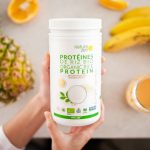How to Create a Healthy and Balanced Meal Plan: Expert Tips and Strategies
Incorporating Superfoods and Functional Foods
Incorporating superfoods and functional foods into our meals can significantly boost nutritional value and support overall health. This section highlights key ingredients such as leafy greens, omega-3-rich foods, and nutrient-dense berries and legumes.
Leafy Greens and Cruciferous Vegetables
Leafy greens like spinach, kale, and Swiss chard are rich in vitamins A, C, and K, as well as folate and iron. These nutrients support immune function, bone health, and red blood cell formation. Cruciferous vegetables like broccoli, Brussels sprouts, and cauliflower contain compounds that may help reduce the risk of certain cancers.
Regularly including a variety of these vegetables in our diet can help us maintain a robust vitamin and mineral profile. Simple methods to incorporate these greens include adding spinach to smoothies, making kale salads, or lightly steaming broccoli as a side dish.
Omega-3 Rich Fish and Seeds
Omega-3 fatty acids are essential for heart health, inflammation reduction, and brain function. Salmon, one of the best sources of omega-3s, along with other fatty fish like mackerel and sardines, provides a substantial amount of these healthy fats.
Seeds such as chia and flaxseed are also excellent plant-based sources of omega-3s. Including these foods in our meals can be simple. We can enjoy grilled salmon with a quinoa salad for lunch or sprinkle chia seeds over our morning yogurt or oatmeal.
Berries, Nuts, and Legumes
Berries like blueberries and strawberries are packed with antioxidants, vitamins, and fiber, which help combat oxidative stress and support digestive health. Nuts, such as walnuts and almonds, provide healthy fats, protein, and important minerals like magnesium and zinc.
Legumes, including beans, lentils, and chickpeas, are excellent sources of plant-based protein and fiber. They help control blood sugar levels and support gut health. We can mix blueberries into cereals, snack on a handful of walnuts, or prepare a hearty chickpea stew to incorporate these powerful foods into our diet.
By thoughtfully including superfoods and functional foods, we can craft meals that are not only delicious but also nutrient-rich, supporting our overall well-being. Both diversity and balance are key to maximizing the health benefits of these ingredients.
Strategies for Meal Prep and Cooking
In this section, we’ll explore efficient methods for meal preparation, cooking techniques to retain nutrients, and creative ways to use leftovers to ensure minimal waste.
Making the Most of Your Time
One of the essential aspects of meal prep is timing. We should select a consistent day each week dedicated to planning, shopping, and preparing meals. Allocating specific tasks to certain days helps us stay organized.
Batch cooking allows us to prepare multiple servings of different dishes, which can be stored and consumed throughout the week. It is also helpful to invest in quality storage containers for portioning meals. By doing so, we ensure that each portion is easily accessible, saving time during busy weekdays.
Cooking Techniques for Maximum Nutrition
To retain the nutritional value of our ingredients, we should opt for cooking methods that preserve vitamins and minerals. Steaming vegetables instead of boiling them helps maintain their nutrient content. Using minimal oil or opting for healthier oils, such as olive or avocado oil, improves the health quotient of our meals.
Slow cooking or pressure cooking can break down tough fibers in meats and legumes, making them easier to digest and more nutritious. Incorporating a variety of cooking techniques like grilling, roasting, and sautéing ensures that our meals are not only balanced but also flavorful.
Repurposing Leftovers
Leftovers are an excellent way to reduce food waste and save time. We can transform leftover grains, such as quinoa or brown rice, into salads or stir-fries for a quick lunch or dinner option. Leftover roasted vegetables can be blended into soups or incorporated into a hearty pasta dish.
For those with a sweet tooth, leftover fruits can be turned into smoothies or baked into healthy desserts. Keeping an inventory of what is left in our fridge and using creativity to repurpose these ingredients ensures that we have a variety of meals throughout the week without the monotony.



